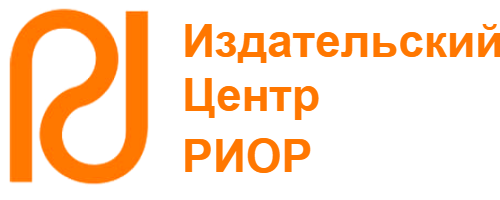Artificial intelligence systems come not only with benefits but also with substantial risks, raising a broad variety of legal and ethical challenges. The use of AI applications should be categorised as high-risk in instances where there is the potential to significantly affect the lives of individuals and must be prohibited when it is incompatible with fundamental rights. The European Union has chosen to address these issues by seeking to specifically regulate artificial intelligence through its proposed Artificial Intelligence Act. This would take the form of a EU Regulation that completely bans some forms of artificial intelligence, requires greater transparency for other use cases and imposes significant and extensive obligations on any ‘high risk’ uses of artificial intelligence.
artificial intelligence, computer program, biometric identification systems, criminal proceedings, Artificial Intelligence Act.
1. Ashley K., Artificial Intelligence and Legal Analytics, Cambridge University Press, Cambridge, 2017.
2. Annexes to the Proposal for a Regulation of the European Parliament and of the Council laying down harmonised rules on artificial intelligence (Artificial intelligence act) and amending certain Union legislative acts, https://eur-lex.europa.eu/resource.html?uri=cellar:e0649735-a372-11eb-9585-01aa75ed71a1.0001.02/DOC_2&format=PDF, Accessed February 10, 2024.
3. Artificial intelligence act: Council and Parliament strike a deal on the first rules for AI in the world, https://www.consilium.europa.eu/en/press/press-releases/2023/12/09/artificial-intelligence-act-council-and-parliament-strike-a-deal-on-the-first-worldwide-rules-for-ai/, Accessed February 11, 2024.
4. Artificial Intelligence Explained, https://books.google.rs/books?id=zHKPzQEACAAJ&newbks=1&newbks_redir=0&hl=sr&redir_esc=y, Accessed February 15, 2024.
5. Artificial intelligence in criminal law and its use by the police and judicial authorities in criminal matters, https://oeil.secure.europarl.europa.eu/oeil/popups/printficheglobal.pdf?id=710029&l=en, Accessed January 26, 2024.
6. Artificial intelligence in criminal law and its use by the police and judicial
7. authorities in criminal matters, https://www.europarl.europa.eu/doceo/document/TA-9-2021-0405_EN.pdf, Accessed February 07, 2024.
8. Axios, https://www.axios.com/2024/01/30/elon-musk-neuralink-brain-chip-human-trial, Accessed January 26, 2024.
9. BrainGate Revolutionary Medical Technology, https://alalmiyalhura.com/articles/braingate-revolutionary-medical-technology, Accessed January 10, 2024.
10. Custers B., “AI in Criminal Law: An Overview of AI Applications in Substantive and Procedural Criminal Law”, in Custers B., Fosch-Villaronga E. (eds.) Law and Artificial Intelligence, Asser Press, The Hague, 2022.
11. Church P. and Cumbley R., “Data and data protection”, in C. Kerrigan (ed.) Artificial intelligence: Law and Regulation, Edward Elgar Publishing, Cheltenham, 2022.
12. Çeltek E., Handbook of Research on Smart Technology Applications in the Tourism Industry, IGI Global, Hershey,2020.
13. Dawn of the EU's AI Act: political agreement reached on world's first comprehensive horizontal AI regulation, https://www.whitecase.com/insight-alert/dawn-eus-ai-act-political-agreement-reached-worlds-first-comprehensive-horizontal-ai, Accessed February 14, 2024.
14. Directive (EU) 2016/680 of the European Parliament and of the Council of 27 April 2016 on the protection of natural persons with regard to the processing of personal data by competent authorities for the purposes of the prevention, investigation, detection or prosecution of criminal offences or the execution of criminal penalties, and on the free movement of such data, and repealing Council Framework Decision 2008/977/JHA, https://eur-lex.europa.eu/legal-content/EN/TXT/PDF/?uri=CELEX:32016L0680, Accessed February 05, 2024.
15. Digwatch, https://dig.watch/updates/elon-musks-neuralink-secures-fda-clearance-for-brain-chip-human-trials, Accessed February 03, 2024.
16. Ebers M. et. al., “The European Commission’s Proposal for an Artificial Intelligence Act—A Critical Assessment by Members of the Robotics and AI Law Society (RAILS)”, Multidisciplinary Scientific Journal No. 4(4), 2021.
17. Ethical and Social Challenges of Brain-Computer Interfaces, https://journalofethics.ama-assn.org/article/ethical-and-social-challenges-brain-computer-interfaces/2007-02, Accessed January 12, 2024.
18. General Data Protection Regulation (GDPR) , https://gdpr-info.eu/, Accessed January 30, 2024.
19. G7 Leaders' Statement on the Hiroshima AI Process, https://digital-strategy.ec.europa.eu/en/library/g7-leaders-statement-hiroshima-ai-process, Accessed January 28, 2024.
20. Kashish R. K., “Brain Gate Technology”, International Journal of Scientific Research in Science and Technology, No. 9 (1).
21. Hoffmann-Riem W., “Artificial Intelligence as a Challenge for Law and Regulation”, in T. Wischmeyer, T. Rademacher (eds.) Regulating Artificial Intelligence, Springer, Cham, 2020.
22. Nikolinakos N., EU Policy and Legal Framework for Artificial Intelligence, Robotics and Related Technologies — The AI Act, Springer Nature,Cham, 2023.
23. Poměnková J., Malach T., “Optimized Classifier Learning for Face Recognition Performance Boost in Security and Surveillance Applications”, Sensors, No 23(15),2023.
24. Physicians Committee’s Statement on Neuralink Reportedly Receiving Approval for Human Clinical Trials From the U.S. Food and Drug Administration, https://www.pcrm.org/news/news-releases/physicians-committees-statement-neuralink-reportedly-receiving-approval-human, Accessed February 03, 2024.
25. Proposal for a Regulation of the European Parliament and of the Council laying down harmonised rules on artificial intelligence (Artificial intelligence act) and amending certain Union legislative acts, https://eur-lex.europa.eu/legal-content/EN/TXT/?uri=celex%3A52021PC0206, Accessed February 09, 2024.
26. Phulre A., Artificial Intelligence, Notion Press, 2022.
27. Razavian N., Knoll F., Geras K. J., “Artificial Intelligence Explained for Nonexperts”, Seminars in Musculoskeletal Radiology, No. 24 (1), 2020.
28. Rerouting Brain Circuits with Implanted Chips, https://www.technologyreview.com/2006/10/31/227741/rerouting-brain-circuits-with-implanted-chips/, Accessed January 07, 2024.
29. Real-time’ versus ‘post’ remote biometric identification systems under the AI Act,
30. https://alti.amsterdam/schroder-biometric/, Accessed February 04, 2024.
31. Riccio L., The Sky Is Falling, Xulon Press, Maitland, 2005.
32. SCIAM, https://www.scientificamerican.com/article/elon-musks-neuralink-has-implanted-its-first-chip-in-a-human-brain-whats-next/, Accessed February 12, 2024.
33. Sajfert J., Quintel T., “Data Protection Directive (EU) 2016/680 for Police and Criminal Justice Authorities.” SSRN Electronic Journal, 2017.
34. The Holy Bible, Set forth in 1611 and commonly known as the King James Version.
35. Volponi P., La macchina mondiale, Einaudi, Torino, 1997.




